Just How Bad Are Sandals for Your Feet?
They're comfy, and they're easy, but they can lead to serious foot problems. Plus, we take a closer look at the rest of your favorite summer shoes.
By Emma Haak and Corrie Pikul
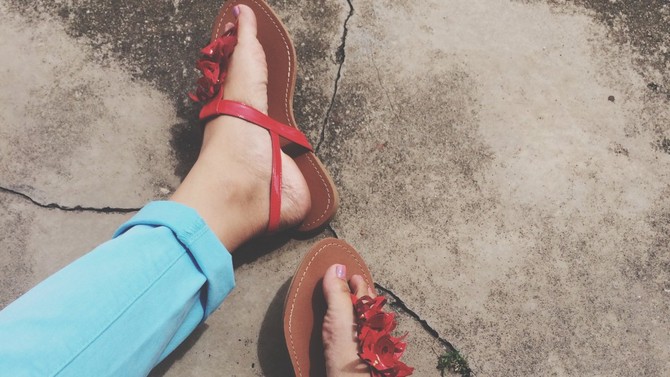
Photo: Jane Lee Wan Mei/EyeEm/Getty Images
Flat Casual Sandals
Danger ranking (out of 5): 3. Thin, flat soles have no shock absorption. That could lead to stress fractures if you wear them all summer long. They also increase your odds of dealing with cracked heels: "When shoes don't have a back, and nothing is cupping the heel and holding the fat pad on your heel in place, it tends to splay out. The skin follows suit and eventually cracks," says Jane Andersen, DPM, a board-certified foot surgeon in Chapel Hill, North Carolina. Those cracks could just be an uncomfortable (and unsightly) annoyance, but if they're deep or they bleed, bacteria, viruses and fungus could make their way in and cause issues like cellulitis, warts or fungal infections.
Best for: Leisurely lunches; stylish air travel options
Avoid: Running through amusement parks; long summertime strolls
Doctor's note: While straps around your ankle area and higher (like gladiator-style picks) do offer additional stability and may prevent twisted or sprained ankles, Andersen says, if the bottom of the shoe is still flat as a pancake, that sandal is doing nothing to support your foot. There is hope, however, if you opt for sandals with arch support. Contoured sandals helped keep arches elevated much better than going barefoot or wearing flat sandals, found a small 2014 study published in the Journal of Foot and Ankle Research. Their benefit was just slightly less than that of orthotics.
Best for: Leisurely lunches; stylish air travel options
Avoid: Running through amusement parks; long summertime strolls
Doctor's note: While straps around your ankle area and higher (like gladiator-style picks) do offer additional stability and may prevent twisted or sprained ankles, Andersen says, if the bottom of the shoe is still flat as a pancake, that sandal is doing nothing to support your foot. There is hope, however, if you opt for sandals with arch support. Contoured sandals helped keep arches elevated much better than going barefoot or wearing flat sandals, found a small 2014 study published in the Journal of Foot and Ankle Research. Their benefit was just slightly less than that of orthotics.
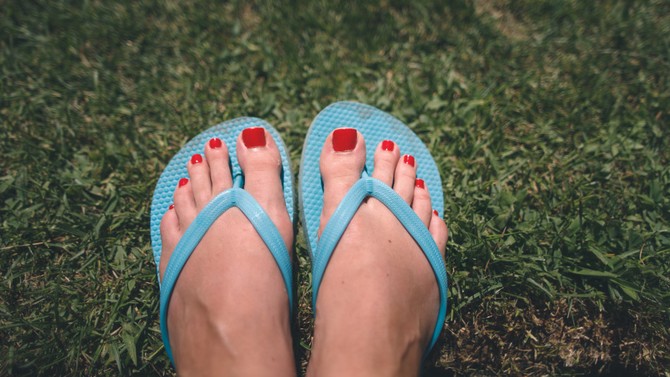
Photo: Ken Gilbert/Moment/Getty Images
Flip-Flops
Danger ranking: 5. You know the drill: If the bottoms are flat, you're getting zero arch or lateral support. That can lead to plantar fasciitis, an inflammation of the tendon that runs underneath your foot and causes heel pain. It’s the most common flip-flop associated problem that Andersen sees in her practice. "We have a really long flip-flop season in North Carolina—often extending until October—and once it's done, there's an influx of patients with heel pain caused by plantar fasciitis," she says.
Best for: Lounging at the beach or pool; protecting your feet from germy locker room shower floors
Avoid: Distances longer than the parking lot to the sand and driving (they can slip off and get lodged beneath car foot pedals). And if you suffer from poor circulation or diabetes-induced numbness in your feet, you really shouldn't be wearing flip-flops out and about, says Andersen. If a foreign body like a rock or piece of glass gets lodged in your foot, you're less likely to feel it and remove it, and that could lead to infection.
Doctor's note: Like contoured sandals, flip-flops with built-in arch support are by far a better choice than the flat variety, says Andersen. "Some are as good as orthotics, or even athletic shoes."
Best for: Lounging at the beach or pool; protecting your feet from germy locker room shower floors
Avoid: Distances longer than the parking lot to the sand and driving (they can slip off and get lodged beneath car foot pedals). And if you suffer from poor circulation or diabetes-induced numbness in your feet, you really shouldn't be wearing flip-flops out and about, says Andersen. If a foreign body like a rock or piece of glass gets lodged in your foot, you're less likely to feel it and remove it, and that could lead to infection.
Doctor's note: Like contoured sandals, flip-flops with built-in arch support are by far a better choice than the flat variety, says Andersen. "Some are as good as orthotics, or even athletic shoes."
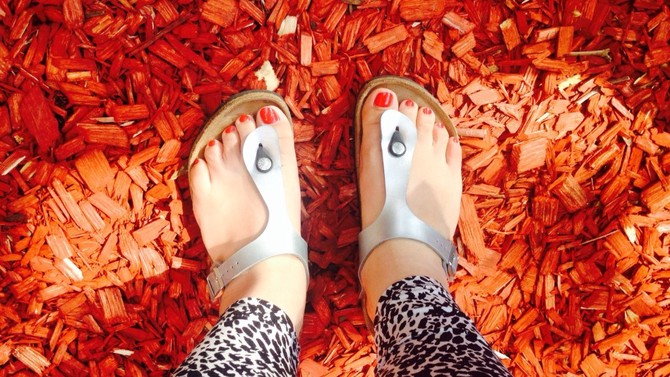
Photo: Danijela Savkovic/EyeEm/Getty Images
European Cork Sandals
Danger ranking: 2. "They feel wonderful for four to five hours of sitting or standing," says Hillary Brenner, DPM, a podiatric surgeon in New York. "But walking in these can put pressure on the ankles, knees and hips. Even though they have arch support, they don't have enough for long journeys."
Best for: Camp counseling; pointing out constellations in the night sky
Avoid: Hiking; any activity that qualifies as a trek
Doctor's note: Break them in by wearing them around your home so you know how they feel before you wear them outside.
Best for: Camp counseling; pointing out constellations in the night sky
Avoid: Hiking; any activity that qualifies as a trek
Doctor's note: Break them in by wearing them around your home so you know how they feel before you wear them outside.
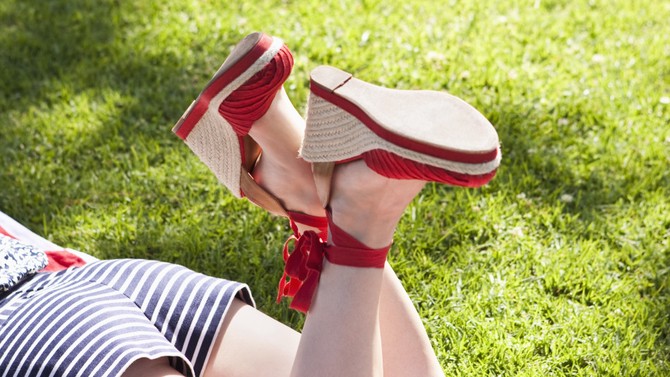
Photo: Lucy von Held/Blend Images/Getty Images
Wedges
Danger ranking: 3. "Wedges add height, and I personally feel more stable in wedges than in heels or platforms," Brenner says. "The back of the shoe shouldn't be much higher than the front."
Best for: Getting around the office on summer Mondays through Thursdays; standing during a speech or a toast
Avoid: Rushing to catch a flight; trying to get anywhere in a hurry, really
Doctor's note: "Cork and raffia soles offer better shock absorption," says Brenner. "Wood is very rigid, which can cause your foot to overcompensate. This can lead to instability and extra pressure on the knees and hips. With wooden sandals, look for a rubberized sole that helps with shock absorption."
Best for: Getting around the office on summer Mondays through Thursdays; standing during a speech or a toast
Avoid: Rushing to catch a flight; trying to get anywhere in a hurry, really
Doctor's note: "Cork and raffia soles offer better shock absorption," says Brenner. "Wood is very rigid, which can cause your foot to overcompensate. This can lead to instability and extra pressure on the knees and hips. With wooden sandals, look for a rubberized sole that helps with shock absorption."
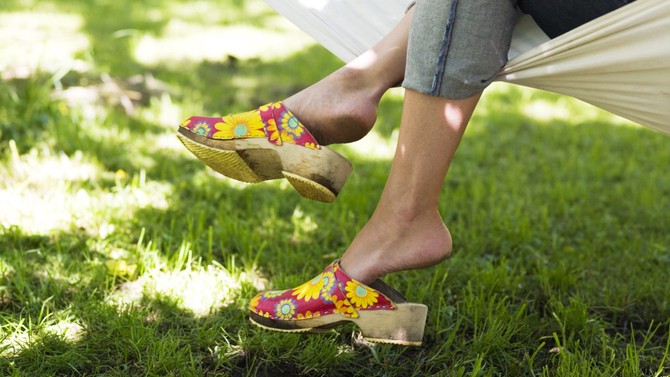
Photo: Johner/Getty Images
Clogs
Danger ranking: 2. Brenner says these were a lifesaver when she had to stand all day during her residency. But they're not stable enough for distance walking, and a small study in Arthritis Care & Research suggests that that they may not be a good bet if you suffer from osteoarthritis of the knee, as the study found that they increased the load on knees by up to 15 percent compared with flat walking shoes with flexible soles, flip-flops or going barefoot.
Best for: Swaying at a mellow concert; preparing hors d'oeuvres for a party
Avoid: Sightseeing around Europe
Doctor's note: "If you're going to be doing a lot of walking, your best bet, really, is a pair of stylish athletic sneakers," says Brenner.
Best for: Swaying at a mellow concert; preparing hors d'oeuvres for a party
Avoid: Sightseeing around Europe
Doctor's note: "If you're going to be doing a lot of walking, your best bet, really, is a pair of stylish athletic sneakers," says Brenner.
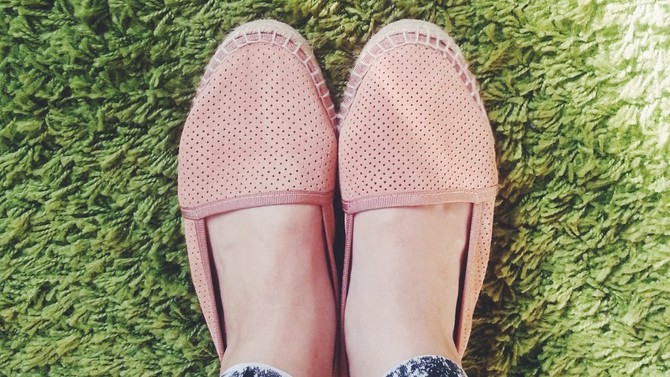
Photo: Talisa George/EyeEm/Getty Images
Espadrilles
Danger ranking: 3. If you're choosing between a wedge style or a completely flat espadrille, pick the wedge. "It offers a little more support," says Brenner. "And the rope soles can provide more of a lift than thin ones. These are good for light activity—walking or standing in moderation—but not much more than that."
Best for: Family reunions; picnicking in the park
Avoid: Energetic frolicking (especially in the rain)
Doctor's note: "The fabric would be more comfortable for those with calluses and bunions that are irritated by leather straps and hardware," says Brenner.
Best for: Family reunions; picnicking in the park
Avoid: Energetic frolicking (especially in the rain)
Doctor's note: "The fabric would be more comfortable for those with calluses and bunions that are irritated by leather straps and hardware," says Brenner.
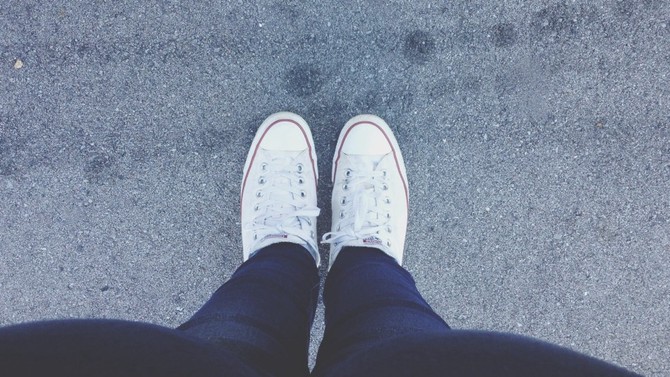
Photo: Victoria Grubbs/EyeEm/Getty Images
Casual Sneakers
Danger ranking: 4. "I have a lot of patients who come to me with heel pain from plantar fasciitis or heel spurs that they developed from wearing very flat sneakers that don't offer support," says Brenner.
Best for: Cruising on a bicycle built for two; chilling at a backyard barbecue
Avoid: They may look sporty, but they're not intended for walking or standing for long periods of time
Doctor's note: Don't be fooled by their relative comfort. "I work with a lot of professional women who think these are their 'safe shoes,' but they can cause a lot of problems," says Brenner.
Best for: Cruising on a bicycle built for two; chilling at a backyard barbecue
Avoid: They may look sporty, but they're not intended for walking or standing for long periods of time
Doctor's note: Don't be fooled by their relative comfort. "I work with a lot of professional women who think these are their 'safe shoes,' but they can cause a lot of problems," says Brenner.
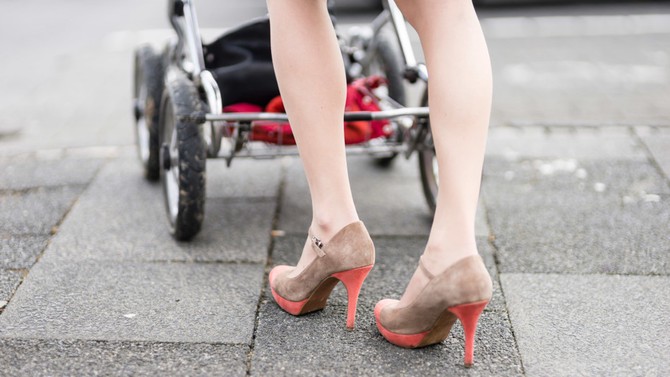
Photo: Westend61/Getty Images
Platforms
Danger ranking: 4. "They're wobbly and compromise the normal gait pattern," says Brenner, and that becomes an even bigger problem when the heel is significantly higher than the toe. And consider that high-heeled-shoe-related injuries doubled between 2002 and 2012, according to a recent study in The Journal of Foot and Ankle Surgery . A whopping 123,355 injuries were linked to high heels—more than 80 percent of them affected the ankle or foot, with the rest causing damage to the knees, torso, shoulders and even the head and neck.
Best for: Adding height at a crowded rooftop party
Avoid: Dancing at said party, climbing stairs; chasing after children
Doctor's note: "For a wedding or other formal occasion, consider styles from Easy Spirit, Aldo or Stella McCartney—pricey but worth it," says Brenner. Try adding padded insoles or arch cushions from the drugstore.
Best for: Adding height at a crowded rooftop party
Avoid: Dancing at said party, climbing stairs; chasing after children
Doctor's note: "For a wedding or other formal occasion, consider styles from Easy Spirit, Aldo or Stella McCartney—pricey but worth it," says Brenner. Try adding padded insoles or arch cushions from the drugstore.
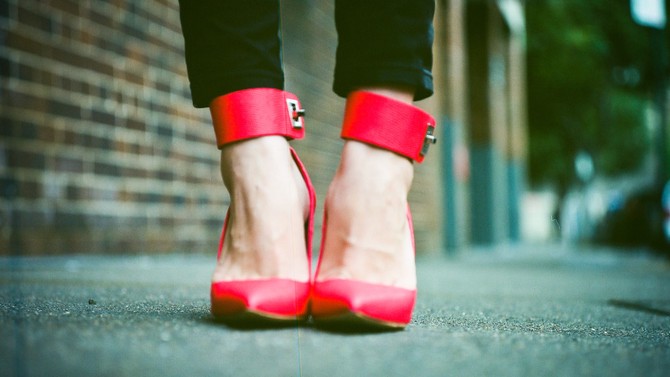
Photo: Jerri Bei/Moment/Getty Images
Stilettos
Danger ranking: 5. We knew they weren't orthopedic shoes, but stilettos, Brenner says, are even worse than we thought: "Intense pressure on the front of the foot can lead to things like sesamoiditis, which is inflammation of the tiny bones under the big toe, and metatarsalgia pain, caused by pressure under the toes. Tight shoes that squeeze the toes together can lead to neuromas, or thickened and irritated nerves. Use caution when wearing shoes with heels higher than 2 inches, especially for longer than 2 hours. "We see a lot of lateral ankle sprains caused by stilettos," says Brenner.
Best for: Boosting height, confidence, sex appeal and personal style (just remember that 8 weeks on crutches can undo it all)
Avoid: Walking (ask someone to carry you!); fulfilling your bridesmaid duties on the dance floor
Doctor's note: "Get your feet properly measured," says Brenner. "Go at the end of the day, when feet are most swollen, and have the length and width measured while standing up, because shoes fit differently when you're sitting down. I'm a believer in custom orthotics that have been prescribed by a doctor. The Cobra orthotic is made to be worn in high-heeled shoes, and provides a little metatarsal cushioning and midfoot control."
Best for: Boosting height, confidence, sex appeal and personal style (just remember that 8 weeks on crutches can undo it all)
Avoid: Walking (ask someone to carry you!); fulfilling your bridesmaid duties on the dance floor
Doctor's note: "Get your feet properly measured," says Brenner. "Go at the end of the day, when feet are most swollen, and have the length and width measured while standing up, because shoes fit differently when you're sitting down. I'm a believer in custom orthotics that have been prescribed by a doctor. The Cobra orthotic is made to be worn in high-heeled shoes, and provides a little metatarsal cushioning and midfoot control."
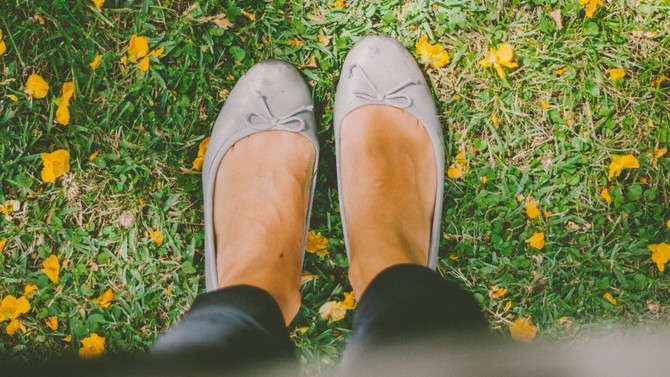
Photo: Claudia Casal/ Moment Open/Getty Images
Ballet Flats
Danger ranking: 5+. "The flattest, flimsiest styles of these shoes can do as much harm—if not more—as a pair of high heels," says Brenner. "Overwearing flats can cause pain in the arches and heels and can lead to bunions. There's absolutely no cushion or support, but people wear them like they're athletic sneakers. That's what makes them dangerous."
Best for: Dining alfresco; watching a play at an outdoor theater
Avoid: Museum tours; hopscotch, any kind of long walk; actual ballet
Doctor's note: If you wear ballet flats at work, stash them at your desk and commute in sneakers, suggests Brenner. Your feet will thank you.
Best for: Dining alfresco; watching a play at an outdoor theater
Avoid: Museum tours; hopscotch, any kind of long walk; actual ballet
Doctor's note: If you wear ballet flats at work, stash them at your desk and commute in sneakers, suggests Brenner. Your feet will thank you.
Published 06/22/2015

